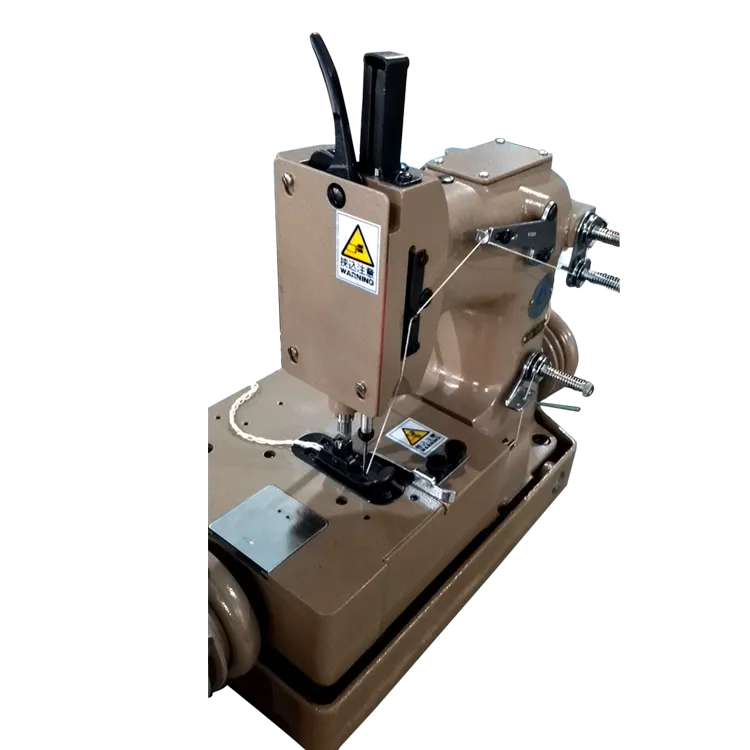sewing leather with regular sewing machine
Sewing Leather with a Regular Sewing Machine
Sewing leather has long been considered a task best suited for heavy-duty or specialized machines. However, many hobbyists and crafters may not have access to these types of machines and might wonder if they can successfully sew leather using a regular sewing machine. The answer is yes—it's entirely possible! With the right techniques, tools, and a bit of practice, you can create stunning leather items using your everyday sewing machine. In this article, we will explore the essential considerations and tips for sewing leather effectively.
Choosing the Right Materials
Before you begin, it's important to select the right type of leather for your project. Vegetable-tanned leather is a popular choice for beginners as it’s relatively easy to work with and has a natural look that can develop a lovely patina over time. Avoid very thick or tough leathers if you're using a regular sewing machine, as they can cause motor strain and stitching problems.
Additionally, ensure you have quality thread, preferably polyester or nylon, as both are strong and resistant to fraying. Using a heavier thread will provide durability, particularly for items that are subject to wear and tear.
Essential Tools
When sewing leather, certain tools can make the process significantly smoother. A walking foot attachment is highly recommended as it helps to move multiple layers of leather through the machine evenly, preventing puckering and uneven stitches. If a walking foot isn't available, a Teflon, or roller foot, can be a good alternative, as it grips the leather nicely without sticking.
Additionally, a leather needle, specifically designed for stitching leather and other heavy materials, is crucial. Leather needles have a sharp point that makes it easier to penetrate the material without causing damage. Typically, a size 90/14 or 100/16 needle is suitable for most lightweight to medium leather.
Preparing Your Leather
Preparing your leather is a key step in ensuring your project’s success. Start by cutting your leather with sharp scissors or a rotary cutter on a cutting mat to achieve clean edges. Use templates or patterns to accurately shape your pieces, taking care to mark any stitch lines lightly with a chalk pencil.
sewing leather with regular sewing machine

It's advisable to test stitch on a scrap piece of leather before working on your actual project. This will give you an understanding of how your machine handles the material and allow you to adjust the tension and stitch length accordingly. A longer stitch length is generally recommended for leather—usually around 3.5 to 4 mm—as it helps prevent perforation while still looking aesthetically pleasing.
Sewing Techniques
When you begin sewing your leather pieces together, proceed slowly. This is not only to ensure that the stitches are even but also to avoid overworking the motor of your sewing machine. Maintain a steady pace and guide the leather gently through the machine, ensuring it doesn’t get stuck.
Backstitching at the beginning and end of seams is essential to secure your stitches. Additionally, if you're sewing multiple layers, consider using clips instead of pins to hold the pieces together, as pins can leave marks or create holes in the leather.
Finishing Touches
After sewing, it’s time for the finishing touches. Depending on your project, you may want to burnish the cut edges of your leather for a polished look. This can be done using a bone folder or edge tool along with an applicator of water or a burnishing compound.
Finally, condition your leather with a specialized leather conditioner to keep it supple and help protect it from wear and moisture.
Conclusion
Sewing leather with a regular sewing machine is not only achievable but also a rewarding endeavor. With the right materials, tools, and techniques, you can create beautiful leather projects without needing a professional machine. Whether you’re crafting bags, wallets, or decorative pieces, the skills you develop through sewing leather can enhance your craftsmanship and elevate your creations to new heights. So gather your supplies, set up your machine, and let your creativity flow!
-
Boost Production Efficiency with a Pattern Sewing MachineNewsAug.29,2025
-
Industrial Excellence with the Best Heavy Duty Sewing MachineNewsAug.29,2025
-
Precision and Power with the Best Pattern Sewing MachineNewsAug.29,2025
-
Reliable Bulk Packaging Starts With the Right FIBC Sewing MachineNewsAug.29,2025
-
Advanced Packaging Solutions: Elevate Productivity with Jumbo Bag Sewing Machine and Industrial Stitching EquipmentNewsAug.29,2025
-
High-Performance Solutions for Bulk Packaging: FIBC Sewing Machine and MoreNewsAug.29,2025
-
Maximize Efficiency with an Industrial Cylinder Arm Sewing MachineNewsAug.28,2025


























